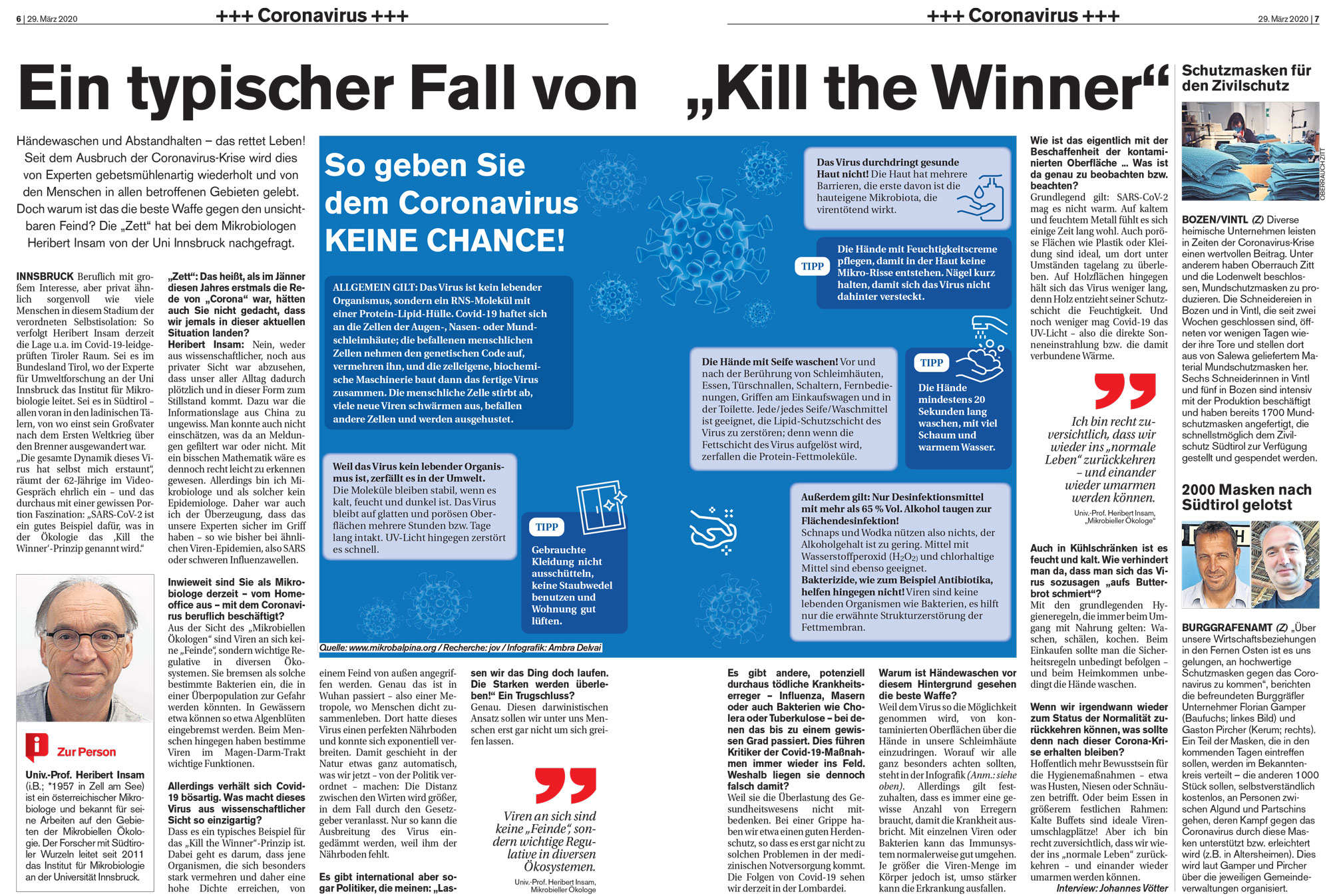The virus is not a living organism, but a ribonucleic acid (RNA) molecule (the genetic information is located on it), which is covered with a protective layer of lipid (fat) and protein molecules. It attaches itself to the cells of the mucous membranes of the eyes, nose or mouth. The infected human cells take up the genetic code of the virus, multiply it and the cell’s biochemical machinery assembles the finished virus. The human cell dies, and many new viruses spread, infect other cells and are coughed up.
COVID-19
coronavirus
Corona
Wash your hands properly and protect yourself from corona
1. Do not shake out used clothing, do not use a feather duster and always keep your home well ventilated.
As the virus is not a living organism, it disintegrates in the environment. The disintegration time depends on the temperature, humidity and type of material on which it is located. The molecules of the virus remain stable when it is cold, damp and dark. UV light quickly destroys viruses on surfaces. The virus remains intact on smooth and porous surfaces (e.g. fabrics) for several hours, perhaps even days. Therefore, do not shake out used clothing, do not use a feather duster and always keep your home well ventilated.
2. Heat melts fat, which is why it is good to use warm water to wash hands, laundry and everything else.
Any soap/detergent is capable of destroying the lipid protective layer of the virus (preferably at least 20 seconds, with plenty of foam). Once the lipid layer is dissolved, the protein-fat molecules disintegrate. Heat melts fat, which is why it is good to use warm water to wash hands, laundry and everything else.
3. Disinfectants weaken the skin’s own defenses.
The virus does not penetrate healthy skin. The skin has several barriers, the first of which is the skin’s own microbiota (“microflora”), which has a virocidal (virus-killing) effect. If you destroy this microbiota with disinfectants, your own defense is weakened!
4. Surface disinfectants
Disinfectants containing more than 65% alcohol are effective for surface disinfection (schnapps and vodka are ineffective, the alcohol content is too low). Products with hydrogen peroxide (H2O2) and chlorine-containing products are also suitable.
5. Bactericides (bacterial toxins), such as antibiotics, do not help!
The virus is not a living organism, so it cannot be killed, the only thing that helps is a structural destruction of the fat membrane (see above).
6. Do not touch mucous membranes with unwashed hands.
It is easier said than done: before and after touching door buckles, switches, remote controls, handles on shopping trolleys, in short, all things that others also use, wash your hands with soap. At least before touching your mucous membranes (nose, mouth, lips etc.)! In any case, it is a matter of course to wash your hands before and after the toilet! Keep your hands moist with moisturizing cream to avoid micro-cracks in the skin. Keep nails short so the virus does not hide behind them!
7. Keep a distance
Moist pronunciation and even the breath of people contain aerosols (tiny, invisible, virus-carrying mist-droplets). A distance of 2 meters is appropriate to keep the risk of infection low. Do not accept any compromises at this distance! Rooms in which several people are present should always be well ventilated!
Article by Heribert Insam, Institute of Microbiology, University of Innsbruck
Die Zeitung am Sonntag
A typical case of “Kill the winner”
References:
- Handfield C et al. (2018) Innate Antiviral Immunity in the Skin. Trends Immunol 39, 328-340
- Kampf G et al. (2020) Persistence of coronaviruses on inanimate surfaces and their inactivation with biocidal agents. The Journal of Hospital Infection 104, 246-251
- Virologydownunder 2020


